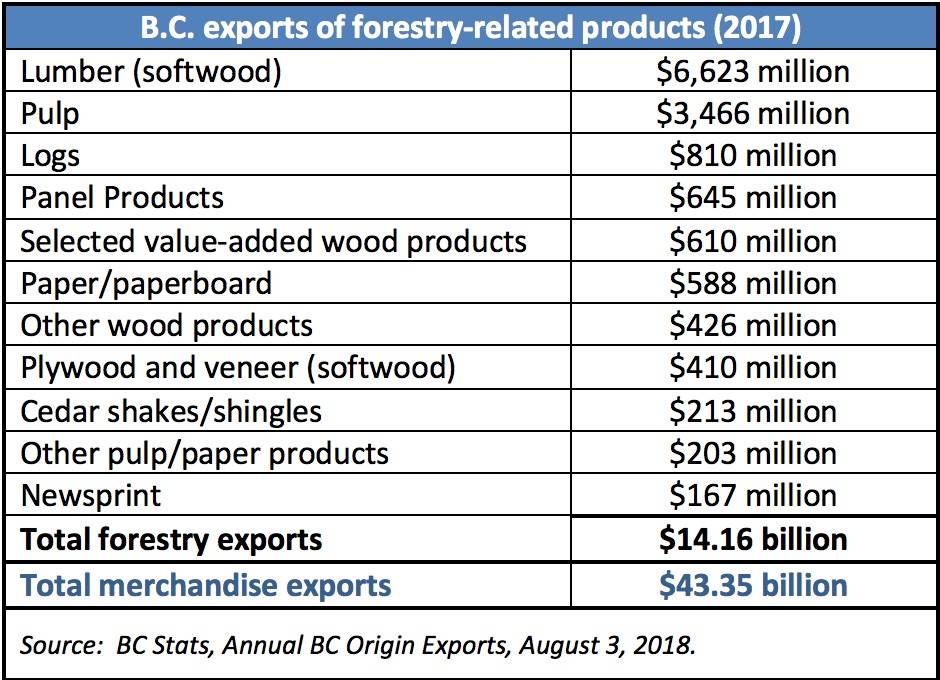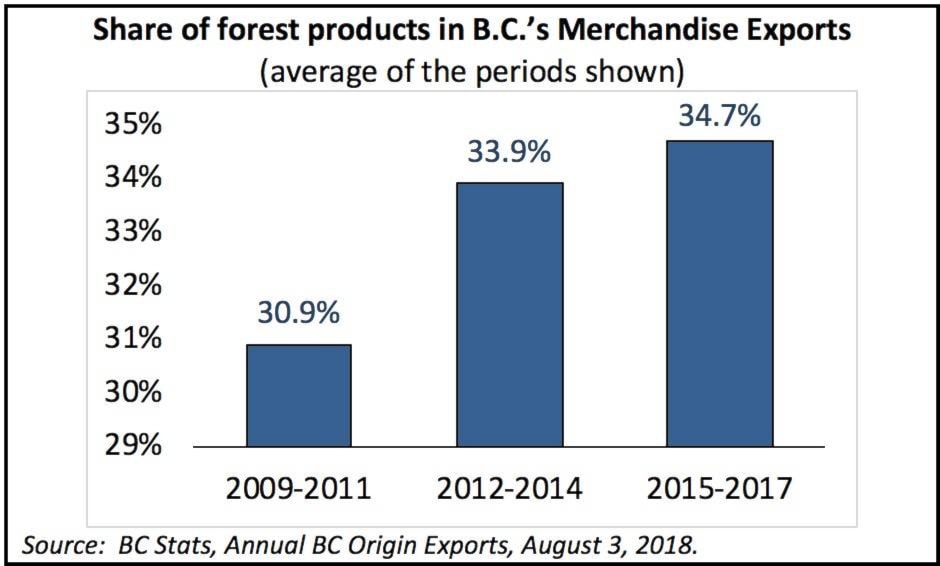The B.C. forest industry is grappling with challenging market conditions and recent provincial government actions that have increased costs and made it harder to do business. That is worrisome. Forestry is a sustainable, high-wage industry that is the mainstay of many regional economies across B.C. – particularly outside of the lower mainland and Greater Victoria.
The activities that take place across all segments of the forest products sector combined account for $13 billion of B.C.’s economic output (GDP), provide direct employment for up to 60,000 British Columbians, and pay $4 billion a year in taxes, royalties and fees to various levels of government. Another 70,000-80,000 jobs also depend on forestry because of the industry’s extensive linkages with other sectors of the B.C. economy. According to a new economic study, in five of seven B.C. regions forestry supports between 8 per cent and 22 per cent of all jobs. By any measure, the industry packs a substantial economic punch.
Below, I discuss one important way forestry is critical to our economy: its outsized place in B.C.’s exports.
British Columbia is a small market that relies on trade for its economic well-being. Exports of goods and services amount to about one-third of the province’s GDP. These exports furnish the economic wherewithal that enables our households, businesses and public institutions to pay for imports of a wide array of goods and services – everything from vehicles, medical devices, and pharmaceuticals to IT equipment, consumer electronic products, digital services, clothing, and many foodstuffs.
As a small jurisdiction, B.C. needs to pay close attention to the performance and prospects of its “traded industry clusters.” These industries produce goods and services for sale outside of the province – globally, and across the country. Traded industries are vital to the province’s overall prosperity.
Today, forestry ranks as B.C.’s biggest traded industry, and by a significant margin.
The figure below shows the average share of forest products in B.C.’s total merchandise exports, measured on a three-year rolling basis starting in 2009 and ending in 2017. Despite the province’s increasingly diversified economy, forestry continues to loom large as a source of exports, generating 31-35 per cent of the earnings that B.C. reaps from selling goods abroad every year. The annual figures bounce around based on trends in commodity markets, the exchange rate, and foreign demand for B.C. exports.
It may surprise some readers to discover that forestry’s contribution to B.C.’s merchandise exports hasn’t fallen, even though other industries – e.g., energy, agriculture, and high technology – have gained a higher profile. Indeed, if anything, forestry’s place in B.C.’s merchandise export mix has expanded slightly since 2009.
The accompanying table provides more detail on B.C.’s forestry-based exports as of 2017. Lumber and pulp are the top export categories, followed by logs, panel products and paper.
The information summarized above underscores two key points.
First, forestry is still the province’s leading industry, based on the value of exports. Second, forestry’s place within B.C.’s export portfolio has not diminished by much over the past decade, contrary to what many people may believe.
Jock Finlayson is executive vice president and chief policy officer of the Business Council of British Columbia
www.facebook.com




